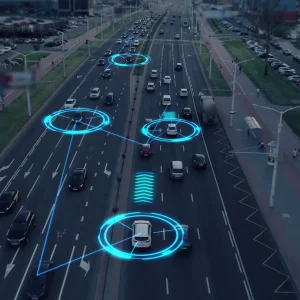Paul Barker speaks to leading van manufacturers about the CO2 difficulties facing the light commercial vehicle market in the future.
The European Commission has introduced some progressively strict targets on the emissions of light commercial vehicles, and crunch time is now looming for those tasked with making sure manufacturers hit the levels that will avoid some fairly draconian financial penalties.
“On the one hand the target for 2015 and 2020 is now decided by the EU, which gives us a clear perspective and target, which is important because we have a direction, but it’s extremely challenging,” Mercedes’ van boss Volker Mornhinweg explains to BusinessCar. “We’ll have to work like hell and spend a lot of Euros to achieve it. We’ll have to work each opportunity to reduce friction in drivetrain, aerodynamics etc.
“We’ll have to go into deep, deep detail through the whole process to get out each gramme – it’s a very crucial and challenging job,” he continues. “But we have a target so we have to go for it.”
Barb Samardzich, Ford’s European product development chief, agrees that it would be a tough challenge to achieve the EU’s levels. “We can hit those targets – technically we know how to do it – the challenge is the cost,” she says. “These are technologies that require a lot of expense added to deliver. As it becomes normal, hopefully economies of scale will come with suppliers.”
The cost issue is also the key for Mornhinweg. “The customer needs a willingness to pay for it as we have to spend to achieve it,” he says. “Everyone has to do the same so maybe there will be a price increase over time, but at the end we should never forget that in our van business the end customer is his customer, the van is a working tool for his business – and we got this across in our discussions with the EU.”
The challenge of introducing electric vehicles is another that both Ford and Mercedes are examining, and with the same conclusion that demand is not currently growing.
“It’s about what the customer wants. You can’t push it – it has to be viable for them,” says Samardzich. “The business owner is going to have a difficult time making a business equation for electric vehicles. It is important to understand the technology but it has to be proved that customers value and want it, and at the moment customers are struggling with the business case.”
PSA Peugeot-Citroen is introducing electric versions of its Citroen Berlingo and Peugeot Partner models in 2013, although the firm’s EV project manager Tanguy Deren isn’t expecting big volumes immediately. “It is as important as the market will require. The market is evolving quite fast and we will react to the market evolution,” he tells BusinessCar. “Small van is the right segment because we know more than 70% of customers from this segment drive less than 100km per day.”
Hybrids and range-extenders are an area the light commercial vehicle manufacturers are yet to properly embrace and offer products in, while the technology is becoming more widespread in the passenger car market.
“We are constantly looking at hybrids and range-extenders. Looking into 2020-25, even meeting the regulations will require some sort of hybridisation and that’s a more rational solution for customers – you still have an engine to fall back on,” Ford’s Samardzich states.
But these moves to new technology don’t herald the end of development for the traditional internal combustion engine, with constant improvements that some believe are slowing the adoption of new technologies. “All automotive companies are making big improvements on internal combustion engines and that may be one reason for slow EV take-up,” says Mercedes’ Mornhinweg. Commenting on the reluctance of the market to take on electric LCVs, he adds: “I think that’s normal when you introduce new technologies into the marketplace. They are competing with internal combustion engines and we’re making an extremely good job of them.”
Mercedes-Benz vans’ head of development Sascha Paasche says continued evolution of existing powertrains is still his favoured route at this stage. “You can’t improve everything by 10% in one go, but lots of little changes, sometimes just 0.05%, can get to a significant level of improvement,” he tells BusinessCar. “Continued effort is necessary; with conventional drive we are not at the limit, we can do more improvements to the internal combustion engine and there are still significant efficiencies to be had. Improving existing technologies is still the cheapest way of improving efficiencies.”
The scope and variety of challenges the light commercial vehicle manufacturers are currently facing in the world of technology and emissions alone is unprecedented, and the main players seem to agree that the impact of the new developments and how they will shape the market is something yet to unfold.





